The Beatles
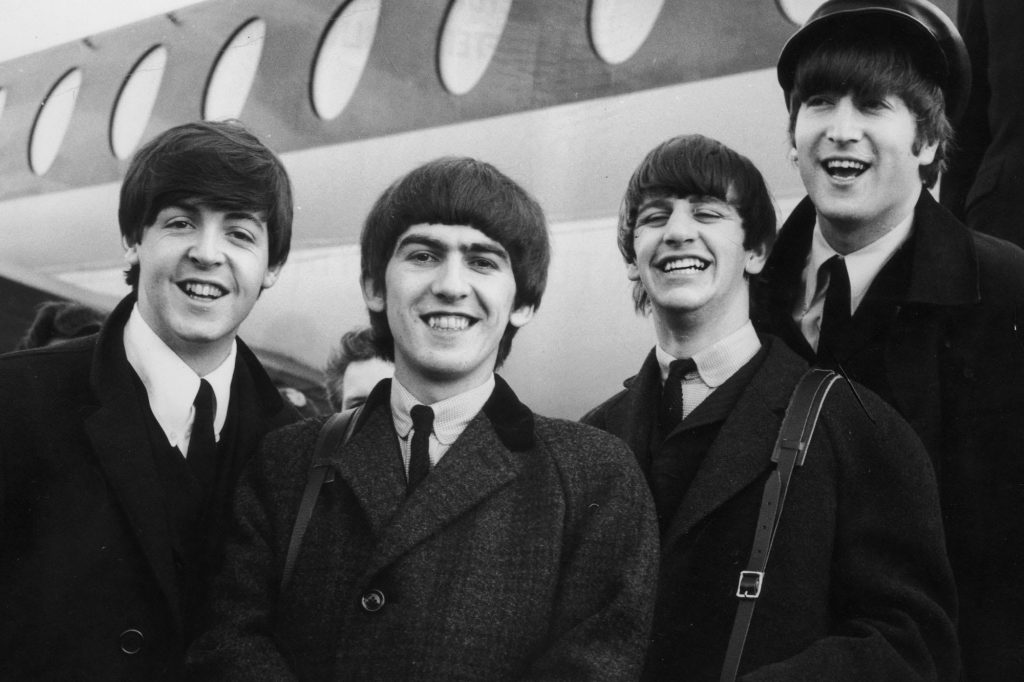
The Beatles are a Liverpool based rock band from the 1960s. Considered one of the most influential bands of all time (if not the most), they managed to write a huge 12 albums between 1962 and 1970, which is one of the reasons as to why they were so exceptional then and even today. The band is famous for its members; John Lennon (co-lead vocals and rhythm guitar), Paul McCartney (co-lead vocals and lead guitar), George Harrison (bass) and Ringo Starr (drummer). These are their primary instruments however all of them play other instruments such as percussion, keyboards, and even sitars. Most artists before this were solo musicians with a band behind them, which is why The Beatles were so revolutionary. They were their own band, in which they were all (almost) as famous as each other and all singing backing vocals instead of the main vocalist getting all the attention like previous groups. The band caused a revolution in the music industry, in and out of the UK which made them famous almost all over the world.
The band are known for their experimental and fairly strange ways of making songs; for example in ‘Being For The Benefit Of Mr Kite!’ where they chopped up a tape recording of an organ, threw them in the air and put the pieces back together. Also in this song, the lyrics are mostly from a circus poster that Lennon bought from an antique shop. Secondly, in the song ‘A Day In The Life’ the breaks between the verses were made by asking an orchestra to start on their lowest note and improvise on their instrument whilst making a crescendo, then all finish at the same time on their highest note. The ending chord lasts around 40 seconds and is considered the most famous played chord in history. With 3 grand pianos and a harmonium, the sound level was increased as the instruments sound died off; this made the chord extremely long and towards the end, you can hear the studio’s environment because of how quiet the instruments are getting.
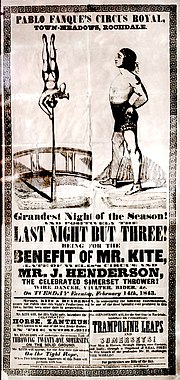
I Want To Hold Your Hand was their song from their 1964 album ‘Meet The Beatles!’. The song quickly topped both the UK and the US charts. The lyrics suggest a love song; the writer is clearly in love with a woman in the hopes that she feels the same way. The song’s instrumentation consists of drums, vocals, bass and guitar; standard for a rock song, especially The Beatles. There is also a tambourine and handclaps which act as percussion for the song. All of these instruments give it a quite thick texture, especially for its time as you could argue that your typical rock bands create thicker textured music now compared to rock music in the 60s. The structure of the song is; intro, verse 1, chorus, verse 2, chorus, bridge, verse 3, chorus, bridge, verse 4, chorus/outro. This is interesting as this is an unconventional structure for British rock; it is usually much simpler. The time signature is 4/4 which means there are 4 crotchets in every bar. This is conventional for most songs both then and now as it is the easiest time signature to work with and listen to.
Tomorrow Never Knows was the last track of their 1966 album ‘Revolver’. Clearly inspired by the group’s use of drugs such as LSD, the song is experimental and has links to psychedelic rock and early electronic music because of its use of very new recording and producing techniques like tape manipulation and sampling. People were not fans of the song at first because it was so different and experimental, however, today it is classed as a great early representation of psychedelic rock. The song’s structure is quite hard to define because there seems to be no set form. It is very unusual, to say the least! However, it is said that the structure is the intro, verse 1, verse 2, verse 3, a break (with loose suggestions of a solo), verse 4, verse 5, verse 6 and finally an outro. As you can see, it doesn’t have a chorus; very strange for the Beatles however strange structures are quite common in psychedelic rock. The time signature again is in 4/4. The song uses sitar, guitar, drums, vocals, bass, organ, tambourine, piano and many other sampled sounds. This creates a very thick texture; perfect for this psychedelic style they were wanting. The sitar, reversed guitar and cymbals and vocals with many experimental effects makes this song fit into this genre also.
The British Invasion
The Beatles were the next upcoming band from Britain in the early 1960s. They got so popular in the UK, their music quickly started to spread to other countries, especially America. They topped the charts every time they released new music and everybody was addicted to them because it was so new and interesting. People dubbed this ‘The British Invasion’ as The Beatles and many other British rock bands were invading the American culture and music industry in ways which had never been seen before. Some other bands involved were The Rolling Stones, The Animals and The Who.
The Beatles went on the Ed Sullivan Show in 1964, an American talk and variety show. It is estimated that 45 percent of US television viewers saw their appearance that night. This hugely helped The British Invasion as it made even more Americans fans of The Beatles. The Beatles popularity was named ‘Beatlemania’ and it described the huge turnout at their concert and live shows. The members often said that they couldn’t even hear themselves when playing live because of the thousands of screaming fans. They had to stop touring in 1966 over keeping the band and its crew safe as their popularity grew to unprecedented amounts. Before this, they travelled in an armoured car with escorts to keep the band as safe as possible.
Psychedelic Rock
This genre of music sprung to life during the 60s thanks to new technology and ways of recording and producing. Artists like Jimi Hendrix and The Beatles took advantage of these new finds to create songs that were before unheard of. They were often strange, with many effects on the vocals and instruments and the lyrics sometimes didn’t make much sense. The genre is centred on the use of drugs like LSD, which many artists like these used at the time. Drugs and psychedelic rock have links with the counterculture movement as this music was loved by the beat generation.
Jimi Hendrix made up strange ways of playing the guitar (playing a left-hand guitar right-handed) and used recording tricks like tape manipulation to make his records different and appealing to hippies. He also used many different pedals to make strange sounds with his guitar and used effects like distortion/fuzz, octave pedals and wah pedals to create his unique sounds. Some examples of tape manipulation would be tape loops, reversing, delay/echo, speed manipulation and many others.
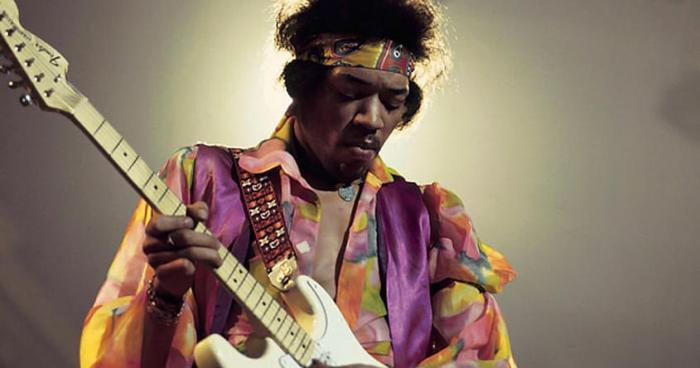
The Beatles’ lyrics in their psychedelic songs do not make much sense for example in the song, Lucy In The Sky With Diamonds where they sing ‘Where rocking horse people eat marshmallow pies’. Lennon claimed he was inspired by his three-year-old son’s drawing of a girl in a land made of fun and fantasy-like things. However, the song was banned by the BBC because of references to drugs as they said the title was an acronym for LSD and the lyrics clearly depict someone on this drug. The band denied this but came out years later and said it was clearly inspired by their use of drugs. The Beatles also used tape manipulation in songs like Tomorrow Never Knows, where some of the instruments are reversed. They also used interesting instruments like sitars which then became popular amongst the beat generation.
The Counterculture Movement
The counterculture movement was a movement throughout the 60s that represented anti-establishment views. This means they were opposed to things that are associated with conventional politics, the economy, and certain things in society. They were unafraid of touchy topics, encouraging discussions about politics, sex, religion, sexuality and civil rights, and used powerful slogans like ‘make love not war’ to express their want for peace and equality. The people involved in this movement were called ‘Hippies’ or the ‘Beat Generation’ and were usually quite young; they were anti-war, for drugs and for sexual freedom. Some of these views quickly came into popular culture, influencing media, music and fashion however many other people, especially older generations, were opposed to these views.
The Beat Generation protested against the war at the time, the Vietnam War. They opposed it because young people were the ones being drafted to the war and they did not see how American involvement in a war in the East would be positive for America. Eventually, public opinion swayed to the opposition of war. Depending on how you looked or dressed, others would judge you based on whether you were anti-war or not. For example, people knew that someone dressed in the hippie style would be against the Vietnam war. However, If you dressed like the hippies in the East, you were considered anti-soviet and your views were too radical; you would be arrested.
Civil Rights
One of the most important times in the civil rights movement in the 60s was the Freedom March in Washington in 1963. 200,000 people of all races joined the march to show people just how many supporters the movement had. Their main aim that day was to force a civil rights legislation and job equality. This is the protest in which Martin Luther King made his famous ‘I Have A Dream’ speech, where he said: “I have a dream that my four little children will one day live in a nation where they will not be judged by the colour of their skin, but by the content of their character.”
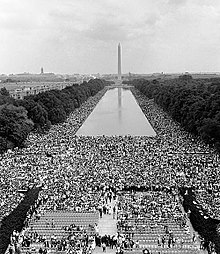
In 1964, the civil rights act was passed. This was huge for the movement as it now allowed the integration of black and white people in public. It also allowed equal employment and limited the use of literacy tests to see if African Americans were able to vote (this was mostly used in the southern states). Before this act, touring artists often refused to play to segregated crowds, which then spurred events organisers to allow integrated audiences so artists would play at their venue.
During the mid and late 1960s after the second civil rights act in the 60s, both Malcolm X and MLK were assassinated. Malcolm X was killed in 1965 and then MLK in 1968, from his hotel room’s balcony. Both of these deaths caused mass riots and unrest throughout the US, which influenced government officials to pass more civil rights acts as soon as they could to stop the riots. Just days after his assassination, the Fair Housing act was passed which made discrimination against anyone, no matter race, religion and sex, illegal.
Fashion
By the early 1960s, it had become acceptable for women to wear trousers every day, as they were formally seen as a masculine item of clothing. Suits and ties were still popular amongst men and dresses amongst most females. Many younger generations were influenced by the style of The Beatles and other bands like The Beach Boys and The Kinks. A popular hairstyle used by these bands was the mop-top, quickly claimed as a popular hairstyle by young boys.
The hippie movement/ counterculture movement changed fashion as we know it. Bright, patterned clothes were huge amongst the Beat Generation amongst other things like tie-dye clothes, peace signed clothing, headbands, sandals and bell-bottomed jeans. Both men and woman wore this style and it represented their views well; for drugs, wanting peace and equality. Female hairstyles in the hippie movement were often natural and let down however other, more traditional women hairstyles were very large and used lots of hairspray, for example, beehives. Hippie men also had long hair, which might represent their anti-establishment views on society and its stereotypes for men.
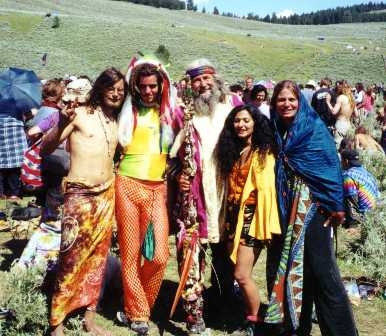
The Californian cool and surf fashion was inspired by the Beach Boys and was said to be a way to escape the worry and violence going on during the Cold War and the Vietnam War. Mini-skirts were popular in this fashion style and were wore by ‘dolly girls’; their clothes were often very tight, small and quite childish looking. Bikinis also made an appearance alongside the surf fashion (they were invented in the 50s but were not widely accepted until the 60s because many people considered it too revealing), mostly popularised through teen beach party films. Bands like The Beatles and The Beach Boys wore matching clothes in live performances and promotional pictures like black suits or shirts.